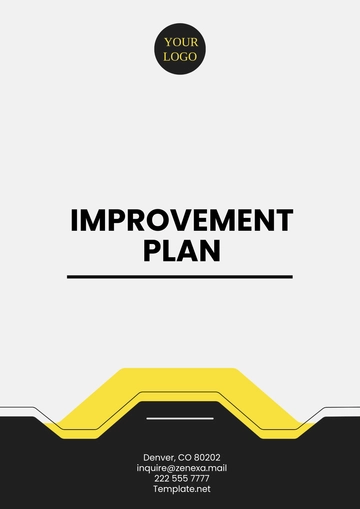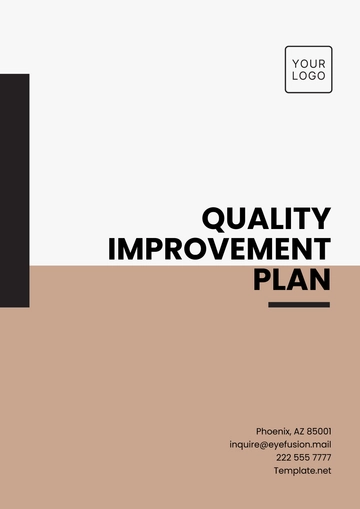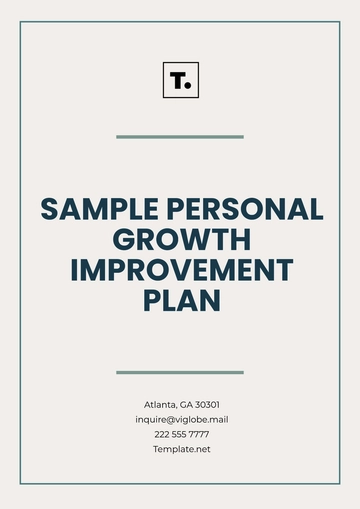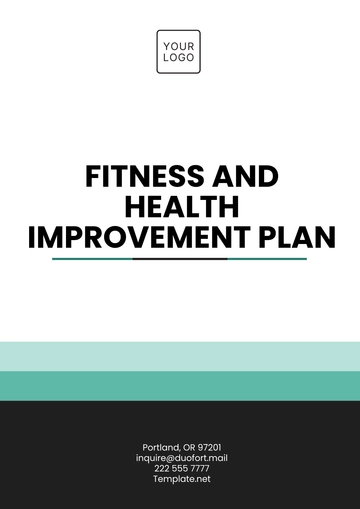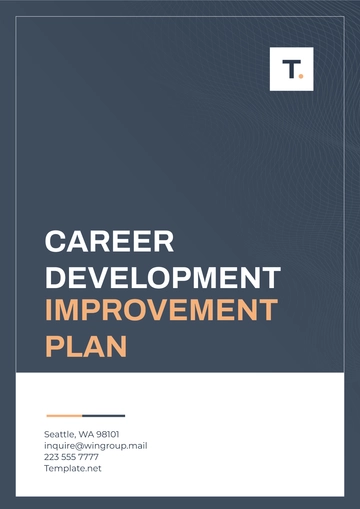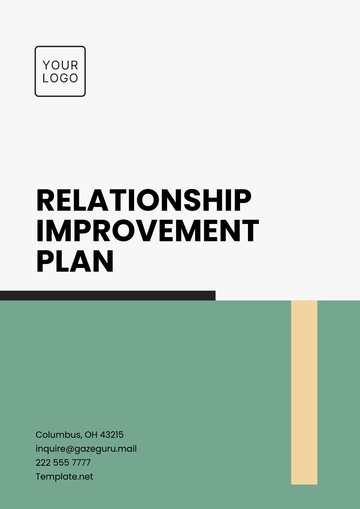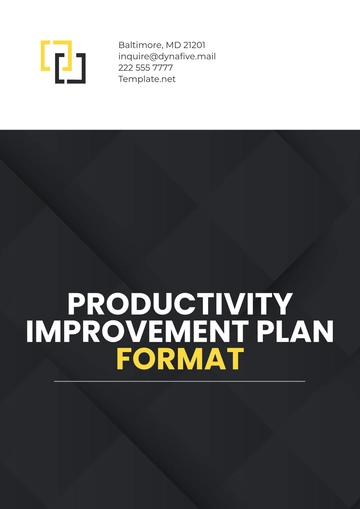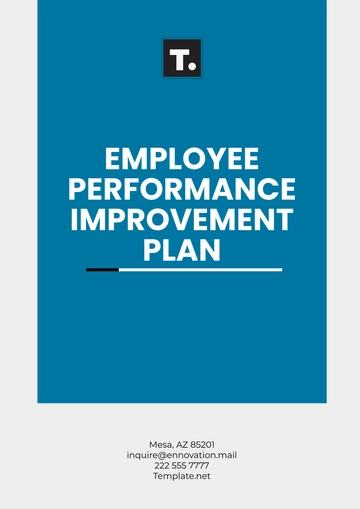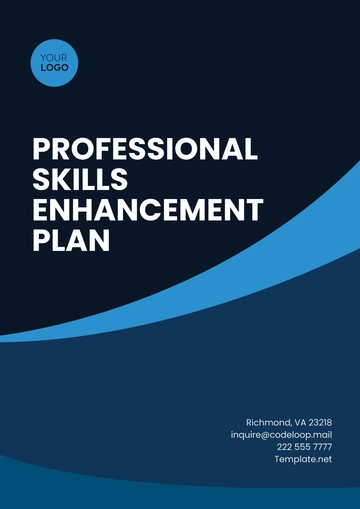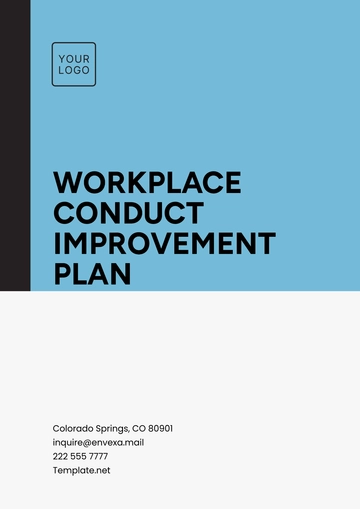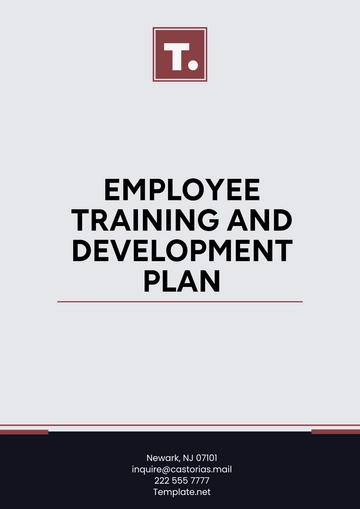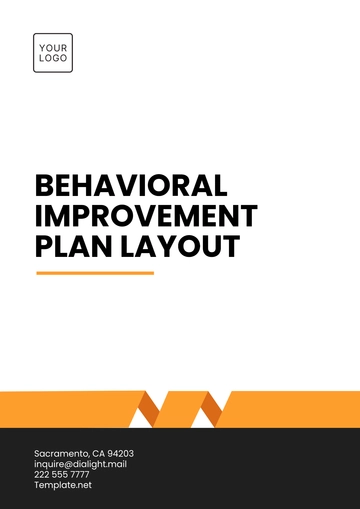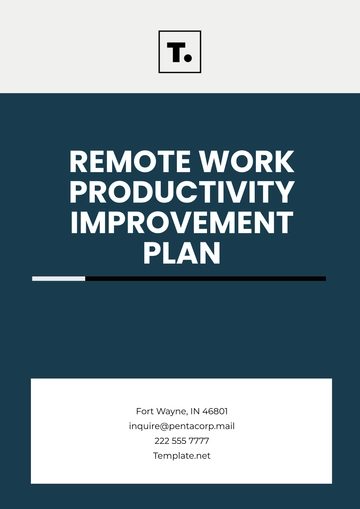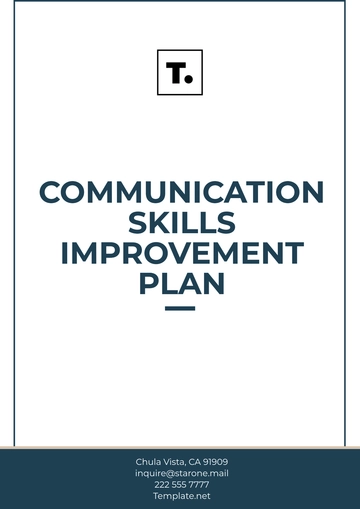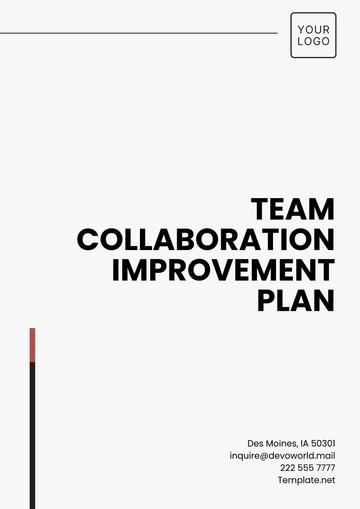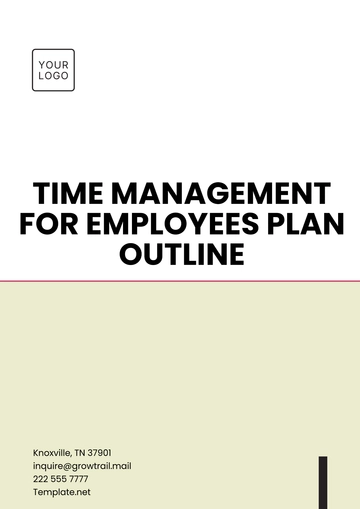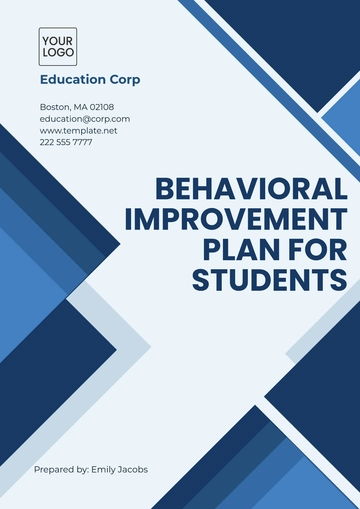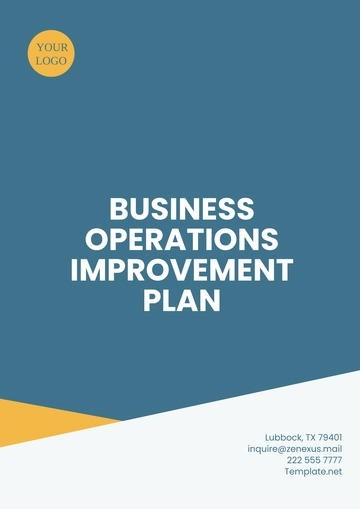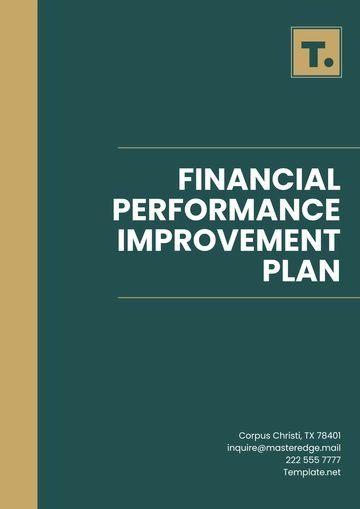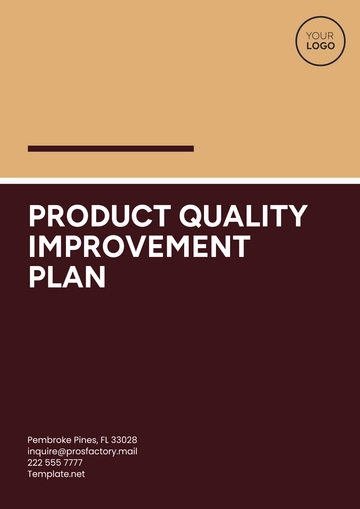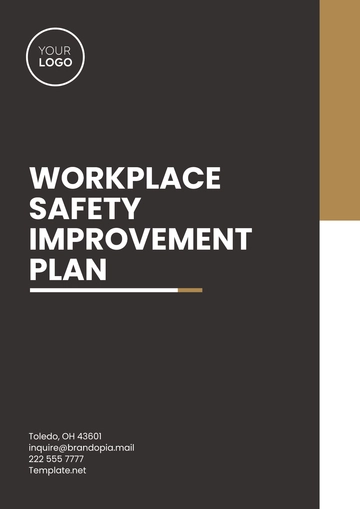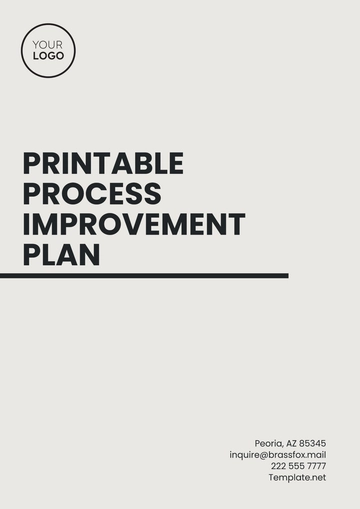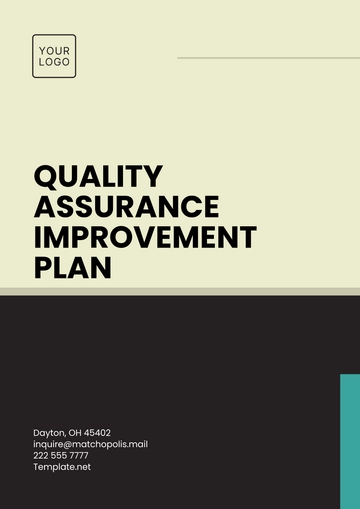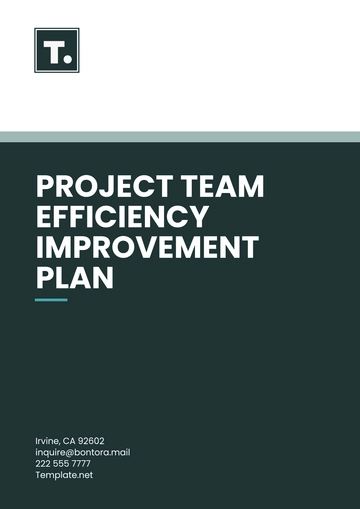Free Startup Strategic Operations Improvement Plan
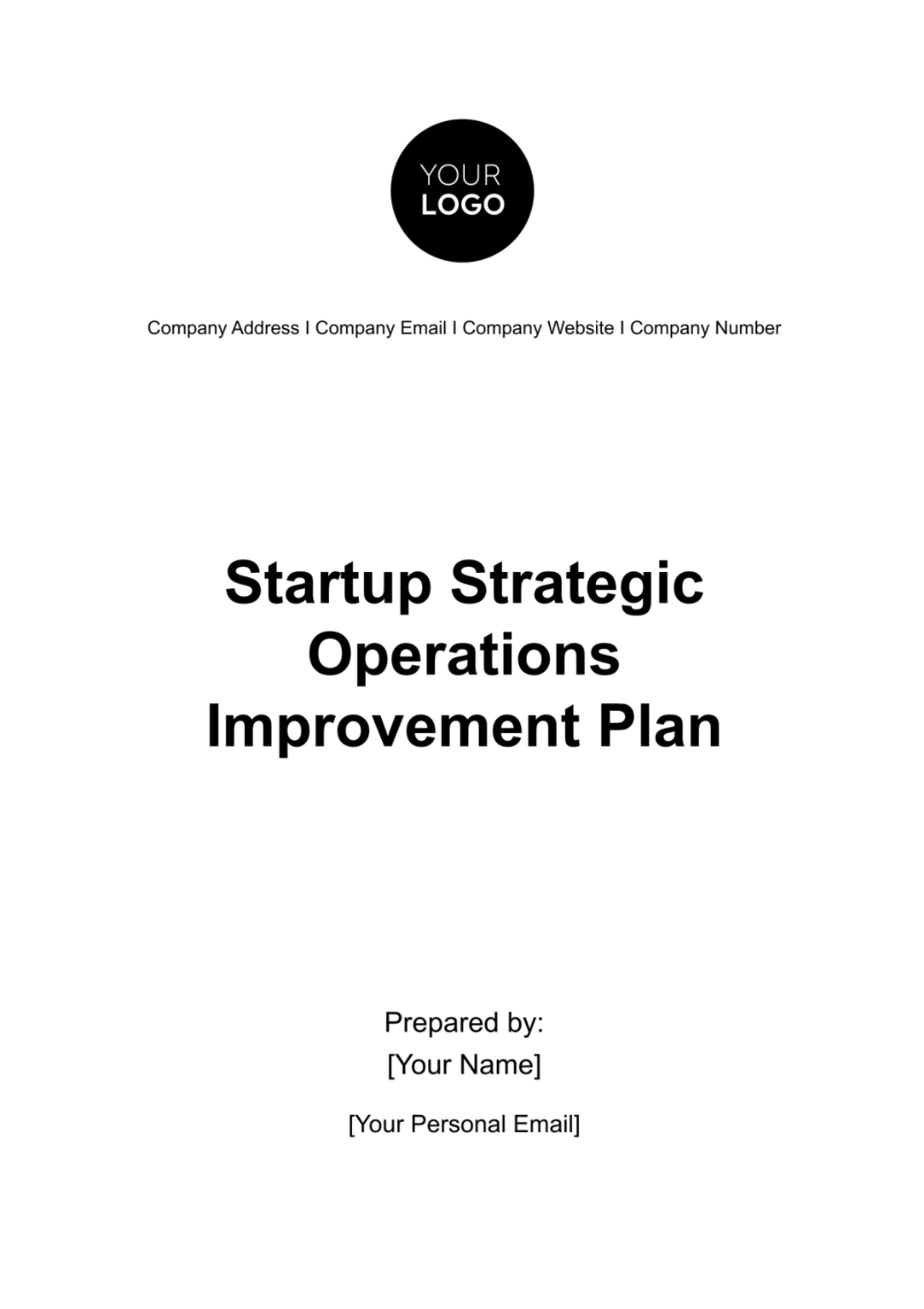
I. Introduction
The Startup Strategic Operations Improvement Plan outlines strategies and initiatives aimed at enhancing operational efficiency, effectiveness, and performance at [Your Company Name]. This plan serves as a roadmap for identifying opportunities for improvement, implementing changes, and achieving strategic objectives.
II. Current State Assessment
A. Performance Metrics Analysis:
Evaluate key performance indicators (KPIs) across different operational areas, such as productivity, quality, cost, and customer satisfaction.
Analyze trends and patterns in performance metrics to identify areas of success and areas needing improvement.
Compare current performance against historical data and industry benchmarks to gain insights into relative performance levels.
B. Process and Workflow Review:
Assess existing processes and workflows within different departments and functions.
Identify bottlenecks, inefficiencies, and areas of redundancy that may be hindering operational performance.
Map out current workflows to visualize the flow of activities and identify opportunities for streamlining and optimization.
C. Stakeholder Feedback Collection:
Gather feedback from employees, customers, suppliers, and other stakeholders regarding their perceptions of current operations.
Conduct surveys, interviews, focus groups, or feedback sessions to capture insights into pain points, challenges, and improvement opportunities.
Consider both qualitative feedback (e.g., anecdotal comments, suggestions) and quantitative feedback (e.g., satisfaction ratings, net promoter scores).
D. Technology and Infrastructure Assessment:
Evaluate the technology infrastructure and systems currently in use within the organization.
Assess the effectiveness and reliability of existing software applications, hardware devices, and communication networks.
Identify any technological gaps or limitations that may be impeding operational efficiency or hindering innovation.
E. Compliance and Regulatory Review:
Review current compliance practices and procedures to ensure alignment with relevant regulations and industry standards.
Identify any non-compliance issues or areas of potential risk that may require remediation.
Assess the effectiveness of internal controls and risk management processes in mitigating compliance-related risks.
F. Organizational Culture and Alignment Analysis:
Evaluate the organizational culture and values to assess their alignment with operational goals and objectives.
Identify cultural barriers or resistance to change that may impede the success of improvement initiatives.
Assess the level of employee engagement, morale, and commitment to continuous improvement efforts.
G. SWOT Analysis:
Conduct a SWOT (Strengths, Weaknesses, Opportunities, Threats) analysis to summarize the findings of the current state assessment.
Identify internal strengths and weaknesses that can be leveraged or addressed in the improvement process.
Identify external opportunities and threats that may impact operational performance and competitiveness.
III. Strategic Objectives
A. Enhance Operational Efficiency:
Streamline processes and workflows to eliminate inefficiencies, reduce cycle times, and optimize resource utilization.
Implement lean principles and continuous improvement methodologies to drive efficiency gains across all operational areas.
Set targets for improving productivity metrics, such as throughput, capacity utilization, and labor efficiency.
B. Improve Product Quality and Customer Satisfaction:
Implement quality management systems and practices to ensure consistent product quality and adherence to customer specifications.
Enhance customer service and support processes to address customer inquiries, resolve issues promptly, and exceed customer expectations.
Establish feedback mechanisms to capture customer feedback and incorporate it into product and service improvement initiatives.
C. Optimize Cost Management and Resource Allocation:
Identify opportunities for cost reduction and optimization across all aspects of operations, including procurement, production, and overhead expenses.
Implement cost-saving initiatives, such as renegotiating vendor contracts, optimizing inventory levels, and reducing waste and rework.
Develop robust budgeting and forecasting processes to improve cost predictability and control.
D. Strengthen Agility and Adaptability:
Foster a culture of agility and adaptability to respond effectively to changing market conditions, customer needs, and competitive pressures.
Implement agile project management methodologies to enhance flexibility and responsiveness in project execution and delivery.
Invest in technologies and systems that enable rapid prototyping, iteration, and scalability of products and services.
E. Enhance Risk Management and Compliance Practices:
Strengthen internal controls and risk management processes to identify, assess, and mitigate operational risks effectively.
Ensure compliance with regulatory requirements, industry standards, and best practices through robust compliance programs and procedures.
Conduct regular risk assessments and audits to proactively identify emerging risks and address compliance gaps.
F. Foster Innovation and Continuous Improvement:
Cultivate a culture of innovation and continuous improvement to drive creativity, experimentation, and learning within the organization.
Establish innovation hubs or cross-functional teams dedicated to generating and implementing innovative ideas and solutions.
Encourage employee participation in improvement initiatives through recognition programs, incentives, and training opportunities.
G. Strengthen Partnerships and Collaboration:
Forge strategic partnerships with suppliers, vendors, and service providers to enhance supply chain efficiency and resilience.
Collaborate with industry peers, research institutions, and academic partners to access cutting-edge technologies, expertise, and market insights.
Leverage collaboration platforms and tools to facilitate communication, knowledge sharing, and joint problem-solving across internal and external stakeholders.
IV. Improvement Strategies
[Your Company Name] should develop strategies and initiatives to address identified areas for improvement and achieve strategic objectives. These strategies include:
Process Optimization: Streamline and standardize processes to eliminate waste, reduce cycle times, and improve overall efficiency.
Technology Integration: Implement new technologies, tools, and systems to automate manual tasks, enhance data visibility, and improve decision-making.
Talent Development: Invest in training and development programs to upskill employees, enhance their capabilities, and empower them to drive operational excellence.
Supply Chain Optimization: Strengthen relationships with suppliers, optimize inventory management, and improve supply chain visibility to enhance efficiency and reduce lead times.
Customer Experience Enhancement: Implement initiatives to enhance the customer experience, such as improving order fulfillment processes, enhancing product packaging, or providing better post-sales support.
Performance Management: Establish performance metrics, dashboards, and reporting mechanisms to monitor progress, track key performance indicators, and identify areas for further improvement.
V. Implementation Plan
A. Process Optimization:
Conduct a detailed analysis of current processes and workflows identified during the Process and Workflow Review.
Identify inefficiencies, bottlenecks, and areas for improvement based on the findings of the analysis.
Develop a roadmap for process optimization, including specific action items, responsible parties, and timelines for implementation.
Implement process improvements in a phased approach, prioritizing high-impact areas first.
Monitor the effectiveness of process changes through regular performance reviews and KPI tracking.
Continuously refine and adjust processes based on feedback and performance data to ensure sustained improvement.
B. Technology Integration:
Assess the technology infrastructure and systems identified during the Technology and Infrastructure Assessment.
Identify opportunities for technology integration to automate manual tasks, improve data visibility, and enhance decision-making.
Research and evaluate potential technology solutions that align with [Your Company Name]'s strategic objectives and operational needs.
Develop an implementation plan for integrating new technologies, including deployment timelines, resource requirements, and training programs.
Roll out technology solutions in a phased approach, starting with pilot projects to test functionality and usability.
Provide ongoing support and training to employees to ensure successful adoption and utilization of new technologies.
C. Talent Development:
Assess the skills and capabilities of employees identified during the Organizational Culture and Alignment Analysis.
Identify training and development needs based on gaps in skills, knowledge, and competencies.
Design and implement training programs to upskill employees in areas such as process improvement methodologies, technical skills, and leadership development.
Provide opportunities for continuous learning and professional growth through workshops, seminars, and online courses.
Establish mentoring and coaching programs to support employee development and career progression.
Measure the impact of talent development initiatives through performance evaluations, employee feedback, and skills assessments.
D. Supply Chain Optimization:
Review supply chain processes and practices identified during the Process and Workflow Review.
Identify opportunities for optimization, such as reducing lead times, improving inventory management, and enhancing supplier relationships.
Collaborate with key stakeholders, including suppliers, vendors, and logistics partners, to implement supply chain improvements.
Implement tools and technologies to enhance supply chain visibility, track shipments, and manage inventory levels effectively.
Monitor key performance indicators, such as on-time delivery rates and inventory turnover, to measure the impact of supply chain optimization efforts.
Continuously evaluate and refine supply chain processes to adapt to changing market conditions and business needs.
VI. Risk Management
A. Risk Identification:
Conduct a thorough assessment of potential risks and hazards associated with the implementation of the improvement initiatives outlined in the Implementation Plan.
Identify internal and external factors that may impact the success of the initiatives, including operational, financial, regulatory, and environmental risks.
Engage stakeholders from different departments and levels of the organization to ensure comprehensive risk identification.
B. Risk Assessment:
Prioritize identified risks based on their likelihood of occurrence and potential impact on the implementation of the improvement initiatives.
Evaluate the severity of each risk by considering factors such as financial loss, operational disruption, reputational damage, and regulatory non-compliance.
Use risk assessment tools and techniques, such as risk matrices or heat maps, to quantify and visualize the magnitude of each risk.
C. Risk Mitigation Strategies:
Develop risk mitigation strategies to address the highest priority risks identified during the risk assessment process.
Implement proactive measures to minimize the likelihood of risk occurrence, such as strengthening internal controls, enhancing security protocols, or diversifying supply chains.
Develop contingency plans and response protocols to mitigate the impact of potential risks if they materialize.
Assign responsibilities for implementing risk mitigation measures and establish clear communication channels for reporting and addressing emerging risks.
D. Monitoring and Control:
Establish monitoring mechanisms to track the effectiveness of risk mitigation strategies and control measures.
Regularly review key risk indicators and performance metrics to assess the status of risk management efforts and identify emerging risks.
Conduct periodic risk assessments to update risk profiles and adjust mitigation strategies as needed.
Implement feedback loops to capture lessons learned from risk events and incorporate them into future risk management practices.
E. Communication and Reporting:
Establish clear communication channels for sharing risk-related information with stakeholders, including executives, project teams, and external partners.
Develop regular reporting mechanisms to provide updates on risk management activities, including risk assessments, mitigation actions, and risk status.
Ensure transparency and accountability in risk communication by documenting decisions, actions taken, and outcomes achieved.
Encourage open dialogue and collaboration among stakeholders to foster a risk-aware culture and promote proactive risk management practices.
F. Continuous Improvement:
Foster a culture of continuous improvement by soliciting feedback and suggestions for enhancing the effectiveness of risk management processes.
Conduct periodic reviews and audits of risk management practices to identify areas for enhancement and optimization.
Encourage innovation and creativity in developing new risk mitigation strategies and approaches.
Commit to ongoing learning and professional development to stay abreast of emerging risks and best practices in risk management.
VIII. Conclusion
The Startup Strategic Operations Improvement Plan provides a roadmap for [Your Company Name] to enhance operational efficiency, effectiveness, and performance. By implementing the strategies and initiatives outlined in this plan, [Your Company Name] can drive continuous improvement, achieve strategic objectives, and position itself for long-term success and growth in the marketplace.
- 100% Customizable, free editor
- Access 1 Million+ Templates, photo’s & graphics
- Download or share as a template
- Click and replace photos, graphics, text, backgrounds
- Resize, crop, AI write & more
- Access advanced editor
Enhance operational efficiency with Template.net's Startup Strategic Operations Improvement Plan Template—an essential tool for startups aiming to optimize their processes. This customizable document, editable in our AI Editor Tool, empowers you to identify areas for improvement, set strategic goals, and implement initiatives to streamline operations effectively. Drive success with Template.net!
You may also like
- Finance Plan
- Construction Plan
- Sales Plan
- Development Plan
- Career Plan
- Budget Plan
- HR Plan
- Education Plan
- Transition Plan
- Work Plan
- Training Plan
- Communication Plan
- Operation Plan
- Health And Safety Plan
- Strategy Plan
- Professional Development Plan
- Advertising Plan
- Risk Management Plan
- Restaurant Plan
- School Plan
- Nursing Home Patient Care Plan
- Nursing Care Plan
- Plan Event
- Startup Plan
- Social Media Plan
- Staffing Plan
- Annual Plan
- Content Plan
- Payment Plan
- Implementation Plan
- Hotel Plan
- Workout Plan
- Accounting Plan
- Campaign Plan
- Essay Plan
- 30 60 90 Day Plan
- Research Plan
- Recruitment Plan
- 90 Day Plan
- Quarterly Plan
- Emergency Plan
- 5 Year Plan
- Gym Plan
- Personal Plan
- IT and Software Plan
- Treatment Plan
- Real Estate Plan
- Law Firm Plan
- Healthcare Plan
- Improvement Plan
- Media Plan
- 5 Year Business Plan
- Learning Plan
- Marketing Campaign Plan
- Travel Agency Plan
- Cleaning Services Plan
- Interior Design Plan
- Performance Plan
- PR Plan
- Birth Plan
- Life Plan
- SEO Plan
- Disaster Recovery Plan
- Continuity Plan
- Launch Plan
- Legal Plan
- Behavior Plan
- Performance Improvement Plan
- Salon Plan
- Security Plan
- Security Management Plan
- Employee Development Plan
- Quality Plan
- Service Improvement Plan
- Growth Plan
- Incident Response Plan
- Basketball Plan
- Emergency Action Plan
- Product Launch Plan
- Spa Plan
- Employee Training Plan
- Data Analysis Plan
- Employee Action Plan
- Territory Plan
- Audit Plan
- Classroom Plan
- Activity Plan
- Parenting Plan
- Care Plan
- Project Execution Plan
- Exercise Plan
- Internship Plan
- Software Development Plan
- Continuous Improvement Plan
- Leave Plan
- 90 Day Sales Plan
- Advertising Agency Plan
- Employee Transition Plan
- Smart Action Plan
- Workplace Safety Plan
- Behavior Change Plan
- Contingency Plan
- Continuity of Operations Plan
- Health Plan
- Quality Control Plan
- Self Plan
- Sports Development Plan
- Change Management Plan
- Ecommerce Plan
- Personal Financial Plan
- Process Improvement Plan
- 30-60-90 Day Sales Plan
- Crisis Management Plan
- Engagement Plan
- Execution Plan
- Pandemic Plan
- Quality Assurance Plan
- Service Continuity Plan
- Agile Project Plan
- Fundraising Plan
- Job Transition Plan
- Asset Maintenance Plan
- Maintenance Plan
- Software Test Plan
- Staff Training and Development Plan
- 3 Year Plan
- Brand Activation Plan
- Release Plan
- Resource Plan
- Risk Mitigation Plan
- Teacher Plan
- 30 60 90 Day Plan for New Manager
- Food Safety Plan
- Food Truck Plan
- Hiring Plan
- Quality Management Plan
- Wellness Plan
- Behavior Intervention Plan
- Bonus Plan
- Investment Plan
- Maternity Leave Plan
- Pandemic Response Plan
- Succession Planning
- Coaching Plan
- Configuration Management Plan
- Remote Work Plan
- Self Care Plan
- Teaching Plan
- 100-Day Plan
- HACCP Plan
- Student Plan
- Sustainability Plan
- 30 60 90 Day Plan for Interview
- Access Plan
- Site Specific Safety Plan
